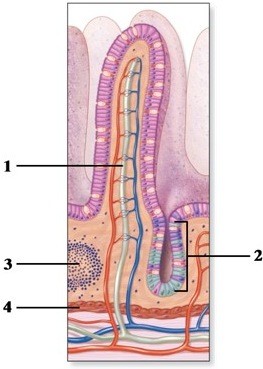The ability of an organism to sense and react to changes in its body illustrates
A. respiration.
B. absorption.
C. circulation.
D. responsiveness.
Answer: D
You might also like to view...
Which of the following are the large output neurons of the cerebrum?
A. Oligodendrocytes B. Stellate cells C. Satellite cells D. Pyramidal cells
Which of the following is NOT a type of hormone interaction?
A) feedback B) permissiveness C) antagonism D) synergism
Answer the following statements true (T) or false (F)
1. In the lymph node, biological filtration is accomplished by phagocytosis. 2. The immune system is different from most systems because it is made up of cells and molecules rather than large organs. 3. Inborn or innate immunity is an example of the body’s specific immunity. 4. The antibodies passed from the mother to the fetus before birth is an example of inherited immunity. 5. One of the things antibodies can do is to make phagocytosis more efficient.
 This figure shows an intestinal villus. What specific layer does number 4 indicate?
This figure shows an intestinal villus. What specific layer does number 4 indicate?
A. Muscularis mucosae B. Lamina propria C. Circular layer of muscularis D. Basement membrane E. Longitudinal layer of muscularis